
» café reason
» butoh
» diary
» new work
»» body ecologies
»» starting from zero
»» breaking free
»» tipping point
»» diamond night
»» ongoing projects
» past work
» classes
» contacts
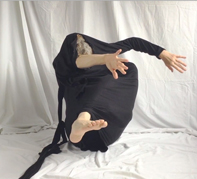
'Impediment' — Ayala Kingsley
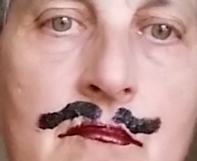
'Gender' — Cath Blackfeather
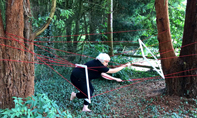
'Impediment' — Cecilia Macfarlane
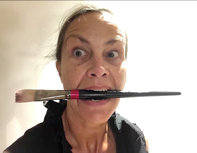
'Aesthetic' — Juliet Henderson
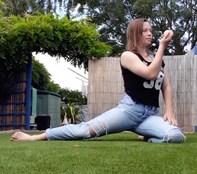
'Isolation' — Alice Baldock
'Breaking Free' video collage
(20 mins)
BREAKING FREE
On the Limitations of the Dancing Body
"Don’t mince your steps, take a giant step!
One should believe in the energy born in oneself out of suffering.
One shouldn’t become a bonsai.
Believe in your own energy and don’t let yourself be affected by others."
(Tatsumi Hijikata)
This project took place over the summer of 2020, during the lockdown period of the Covid-19 outbreak. Originally planned as a 'live' symposium, its aim was to explore some of the barriers dancers encounter in their practice and performance. Performance artists, and dancers in particular, present their own bodies as an art form. This places significant pressure on them to look and move a certain way. We wanted to investigate how issues of gender, impediment, aesthetic, and — latterly — isolation, affected us all.The eventual online project involved collaboration between Café Reason members and associates and a DPhil researcher from Oxford University and was supported by TORCH Humanities Cultural Project. You can see the project page here.
Each fortnight during June and July, we took turns to offer a ‘score’ for artistic exploration on each of the four themes. In response to these prompts, we individually created small pieces of work (dance, text, art) which we shared and discussed. These intimate, personal reflections were then curated and edited into a video collage, with a specially commissioned music soundtrack. You can see the finished video here or on YouTube. (If you would like to read the scores, you can download them here.)
THEMES
The Gendered Body — What is the effect of gender stereotypes upon our sense of self? How do we see ourselves and how do others see us? Does this affect our lives and our performance?
The Impeded Body — How do we move with a body that is, visibly or invisibly, restricted; a body that will not or cannot behave as we want it to? Can we create a new vocabulary of movement?
The Aesthetic Body — How do our or society’s ideals of beauty shape how we see our bodies? What do we want to show to (or hide from) our audience? Can we be free of the need to ‘look like’ a dancer? Can we make work that is not beautiful?
The Isolated Body — What impact has the Covid-19 pandemic had upon our relationships and movement practice. Do we inhabit space differently now? How has it affected the way we experience our bodies, how we interact and communicate?
CREDITS
Dance, film, art, and texts — Alice Baldock, Cath Blackfeather, Juliet Henderson, Ayala Kingsley, Cecilia Macfarlane
Video editing — Peter Glyn Jones
Music — Malcolm Atkins
Additional vocals — Lizzy Spight
Concept and direction — Alice Baldock, Ayala Kingsley
REVIEW
When we first conceived putting together Breaking Free in late 2019, both Ayala and I had a very different idea of how it would look. We were imagining a handful of days of intensive collaboration between anyone curious in how the body moves and what limits it — a mixture of dancers, scholars, and members of the wider community. People would be thrown close together to discuss and move.
With the onset of 2020 this vision of a group symposium quickly disappeared — not being able to come within 2 metres of each other, dance was out of the question. We had to find a way to adapt our project to something that could still be about the body, but to take place from physically distant locations. This was a big effort to begin with; I think all of us were reluctant to try to adapt. However, the end product ended up being even more physically demanding, time-consuming, and rewarding than I expected.
In terms of my research, which focuses on gender and the body in dance studies and Japanese history, the work we did for Breaking Free allowed me to probe some problems which kept arising in my research. Among these was the idea of aesthetics in dance, and how much a dancer’s body needs to conform to certain standards to be beautiful on stage. This always presents a hypocrisy for me when thinking about butoh, a dance form which was created — at least in part — to be ugly, to challenge, and to provoke. Our work allowed me to feel how other dancers dealing with butoh, and dance in general, dealt with this tension. The notion of trying to be the ‘correct’ size, shape, age, or level of ability arose throughout the weeks, and we all discussed how we felt that at least part of this came from always being in front of an audience — even when this audience is a camera.
Overall, Breaking Free allowed me to connect with an amazing group of dancers, to see our difficulties and celebrate our victories as we tried to confront the ongoing struggle between movement and the things that limit it.
Alice Baldock
****************************************************
Café Reason gratefully acknowledge the financial support of the TORCH Humanities Cultural Programme.
